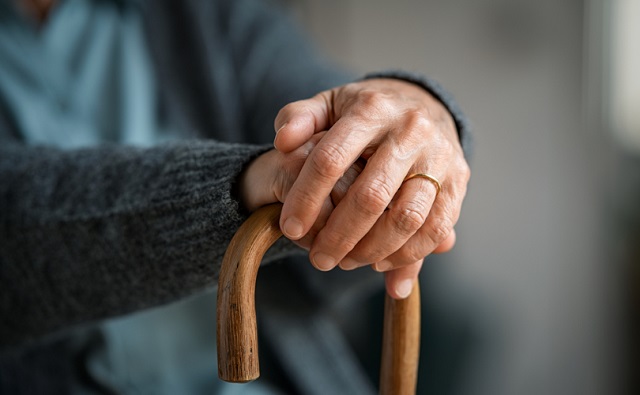COVID-19
Learning loss piles up alongside snow while ‘e-learning’ collects dust

From the Fraser Institute
By Alex Whalen and Paige MacPherson
During COVID school closures, students in the province missed at least 125 days of school between March 2020 and February 2022, more than any other province (except Ontario), generating a significant learning loss from which students have not caught up.
In a world increasingly connected by technology, and given the Nova Scotia government recently spent tens of millions of dollars enabling at-home learning, one might think that students would seamlessly shift to online learning during the recent snowstorms to avoid losing crucial instructional time. Unfortunately, that’s not happening.
During COVID school closures, the Nova Scotia and federal governments spent at least $31.5 million dollars on “virtual school” and other technological upgrades so students could, according to the provincial government, “succeed, even in an at-home learning environment.”
Unfortunately, the electronic learning infrastructure—which includes Chromebooks, laptops and iPads for students and teachers, and additional support and new teachers for Nova Scotia Virtual School—is collecting dust in a corner while Nova Scotia kids are falling further behind.
This isn’t some blip in an otherwise strong record of instructional time for Nova Scotia students. During COVID school closures, students in the province missed at least 125 days of school between March 2020 and February 2022, more than any other province (except Ontario), generating a significant learning loss from which students have not caught up.
Indeed, according to the latest results (2022) from the Programme for International Assessment (PISA), the gold standard of testing worldwide, Nova Scotia 15-year-olds trail the Canadian average in reading by 18 points and trail the Canadian average in math by 27 points. For context, PISA characterizes a 20-point drop as one year of lost learning.
Moreover, between 2003 and 2022, Nova Scotia student performance in reading dropped by 24 points—more than one year of learning loss—and dropped by 45 points in math. In other words, in math, 15-year-old Nova Scotia students today are more than two years behind where Nova Scotia 15-year-olds were in 2003.
These troubling trends underscore the need to put the existing e-learning infrastructure to work. During a recent two-week period, students in the Cape Breton-Victoria Regional Centre for Education school district missed seven days of school due to snow. And some students missed an additional five days due to weather and power outages. That’s nearly three weeks. While more instructional time is not a silver bullet for student success—and with power outages, e-learning is not a perfect solution—it could still make a big difference.
According to international research, missed classroom time causes learning loss and impacts children for life, reducing their life-long earnings. Nova Scotia education researcher Paul Bennett found that lost classroom time due to inclement weather compounds absenteeism and sets back student achievement and social progress.
The Houston government should ensure that Nova Scotian students have access to teacher-directed e-learning when schools are closed and, like other jurisdictions in Canada and the United States, abandon the practise of simply cancelling school due to inclement weather. It’s simply common sense. The snow may pile up, but there’s no good reason why learning loss must pile up with it. Parents are right to demand access to the e-learning they’ve already paid for through their tax dollars.
Authors:
2025 Federal Election
Conservatives promise to ban firing of Canadian federal workers based on COVID jab status

From LifeSiteNews
The Conservative platform also vows that the party will oppose mandatory digital ID systems and a central bank digital currency if elected.
Pierre Poilievre’s Conservative Party’s 2025 election platform includes a promise to “ban” the firing of any federal worker based “solely” on whether or not they chose to get the COVID shots.
On page 23 of the “Canada First – For A Change” plan, which was released on Tuesday, the promise to protect un-jabbed federal workers is mentioned under “Protect Personal Autonomy, Privacy, and Data Security.”
It promises that a Conservative government will “Ban the dismissal of federal workers based solely on COVID vaccine status.”
The Conservative Party also promises to “Oppose any move toward mandatory digital ID systems” as well as “Prohibit the Bank of Canada from developing or implementing a central bank digital currency.”
In October 2021, the Liberal government of former Prime Minister Justin Trudeau announced unprecedented COVID-19 jab mandates for all federal workers and those in the transportation sector. The government also announced that the unjabbed would no longer be able to travel by air, boat, or train, both domestically and internationally.
This policy resulted in thousands losing their jobs or being placed on leave for non-compliance. It also trapped “unvaccinated” Canadians in the country.
COVID jab mandates, which also came from provincial governments with the support of the federal government, split Canadian society. The shots have been linked to a multitude of negative and often severe side effects, such as death, including in children.
Many recent rulings have gone in favor of those who chose not to get the shots and were fired as a result, such as an arbitrator ruling that one of the nation’s leading hospitals in Ontario must compensate 82 healthcare workers terminated after refusing to get the jabs.
Beyond health concerns, many Canadians, especially Catholics, opposed the injections on moral grounds because of their link to fetal cell lines derived from the tissue of aborted babies.
COVID-19
RFK Jr. Launches Long-Awaited Offensive Against COVID-19 mRNA Shots

 Nicolas Hulscher, MPH
Nicolas Hulscher, MPH
As millions of Americans anxiously await action from the new HHS leadership against the COVID-19 mRNA injections—injected into over 9 million children this year—Robert F. Kennedy Jr. has finally gone publicly on the offensive:
Let’s go over each key point made by RFK Jr.:
The recommendation for children was always dubious. It was dubious because kids had almost no risk for COVID-19. Certain kids that had very profound morbidities may have a slight risk. Most kids don’t.
In the largest review to date on myocarditis following SARS-CoV-2 infection vs. COVID-19 vaccination, Mead et al found that vaccine-induced myocarditis is not only significantly more common but also more severe—particularly in children and young males. Our findings make clear that the risks of the shots overwhelmingly outweigh any theoretical benefit:
The OpenSAFELY study included more than 1 million adolescents and children and found that myocarditis was documented ONLY in COVID-19 vaccinated groups and NOT after COVID-19 infection. There were NO COVID-19-related deaths in any group. A&E attendance and unplanned hospitalization were higher after first vaccination compared to unvaccinated groups:
So why are we giving this to tens of millions of kids when the vaccine itself does have profound risk? We’ve seen huge associations of myocarditis and pericarditis with strokes, with other injuries, with neurological injuries.
The two largest COVID-19 vaccine safety studies ever conducted, involving 99 million (Faksova et al) and 85 million people (Raheleh et al), confirm RFK Jr.’s concerns, documenting significantly increased risks of serious adverse events following vaccination, including:
- Myocarditis (+510% after second dose)
- Acute Disseminated Encephalomyelitis (+278% after first dose)
- Cerebral Venous Sinus Thrombosis (+223% after first dose)
- Guillain-Barré Syndrome (+149% after first dose)
- Heart Attack (+286% after second dose)
- Stroke (+240% after first dose)
- Coronary Artery Disease (+244% after second dose)
- Cardiac Arrhythmia (+199% after first dose)
And this was clear even in the clinical data that came out of Pfizer. There were actually more deaths. There were about 23% more deaths in the vaccine group than the placebo group. We need to ask questions and we need to consult with parents.
Actually, according to the Pfizer’s clinical trial data, there were 43% more deaths in the vaccine group compared to the placebo group when post-unblinding deaths are included:
We need to give people informed consent, and we shouldn’t be making recommendations that are not good for the population.
Public acknowledgment of the grave harms of COVID-19 vaccines signals that real action is right around the corner. However, we must hope that action is taken for ALL age groups, as no one is spared from their life-reducing effects:
Alessandria et al (n=290,727, age > 10 years): People vaccinated with 2 doses lost 37% of life expectancy compared to the unvaccinated population during follow-up.
Epidemiologist and Foundation Administrator, McCullough Foundation
Please consider following both the McCullough Foundation and my personal account on X (formerly Twitter) for further content.
-

 Business1 day ago
Business1 day agoTrump: China’s tariffs to “come down substantially” after negotiations with Xi
-

 Business1 day ago
Business1 day agoTrump considers $5K bonus for moms to increase birthrate
-

 Business2 days ago
Business2 days agoHudson’s Bay Bid Raises Red Flags Over Foreign Influence
-

 2025 Federal Election2 days ago
2025 Federal Election2 days agoCanada’s pipeline builders ready to get to work
-

 2025 Federal Election2 days ago
2025 Federal Election2 days agoMark Carney Wants You to Forget He Clearly Opposes the Development and Export of Canada’s Natural Resources
-

 Business20 hours ago
Business20 hours agoChinese firm unveils palm-based biometric ID payments, sparking fresh privacy concerns
-

 2025 Federal Election1 day ago
2025 Federal Election1 day agoCanada’s press tries to turn the gender debate into a non-issue, pretend it’s not happening
-

 International2 days ago
International2 days agoNew York Times publishes chilling new justification for assisted suicide














